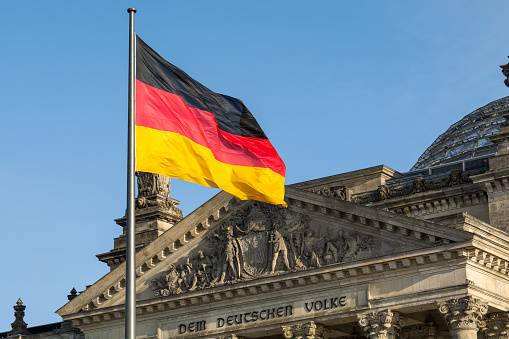The German Economy
Germany is a western European country with over two millennia of history. Its capital, Berlin, boasts a diverse landscape and nightlife, the Brandenburg Gate, and numerous World War II sites. Its other cities include Munich, famous for Oktoberfest and beer halls, and Frankfurt, home to skyscrapers and the European Central Bank.
Small and medium-sized enterprises (Mittelstand) form the backbone of the german economy
Germany’s economy is robust and the Mittelstand is a key contributor to its success. The German economy has seen a recent increase in interest in owner-managed SMEs, and several countries are looking to replicate the German model. This is a good thing for Germany, as Mittelstand firms contribute to the resilience of the German economy during economic crises.
According to the World Bank, more than 96% of the German economy is made up of Mittelstand firms. These companies provide jobs and are responsible for over 35 percent of the country’s turnover. Moreover, they generate a majority of the nation’s net value added (55%) and contribute to 17% of German exports. In addition, Mittelstand firms create employment for more than 60% of the country’s workforce, and train 82% of all German apprentices.
The German Mittelstand is a powerful force in the economy, but it faces challenges. Often, Mittelstand companies lack political support and face a host of other challenges. The media may give the impression that the German economy is dominated by large companies, but in reality, nearly ninety-five percent of the country’s companies are in the mid-size sector.
Many Mittelstand businesses struggle to find qualified employees. The younger generation may not be interested in working in a family business. In addition, many Mittelstand businesses struggle with succession issues. Although the founding family may still be in charge of the business, it may have passed the reins to external managers. That could mean the business will cease to exist.
The German economy depends on Mittelstand companies. The size of the Mittelstand varies significantly from company to company. The definition of Mittelstand is very broad. It includes companies that employ at least two people and have annual sales of EUR50 million. Nevertheless, the term is sometimes used to refer to small and medium-sized enterprises.
Automotive industry remains the leader
Despite the global economic downturn, the automotive industry remains the backbone of the German economy. The auto industry contributes about 10% of German GDP and 930,000 jobs. But the industry has seen its share of problems in recent years, including overcapacity, the transition to electrification, and changes to the EU’s tougher emission standards. In the first half of this year, production at all of Germany’s major carmakers slowed.
The automotive industry has long been a pillar of the German economy, but recent changes have put it under a lot of pressure. While Germany is renowned for its technological prowess, there is some uncertainty in its automotive sector. The country is struggling to adapt to fundamental shifts in the automotive industry, from precision metal bending to advanced electronics. Meanwhile, a number of rivals in the field are threatening to derail its dominance, including Tesla, Waymo, and NIO.
The German automotive industry is a powerful symbol of Germany’s economic might and is central to the nation’s identity. To disavow the car industry would be an act of national disdain. Meanwhile, carmakers continue to expand outside their traditional strongholds in the south.
The auto industry in Germany is heavily dependent on exports. But, in 2020, exports of passenger cars fell by 24% year on year. In response, the government introduced a stimulus package in Europe, which included a VAT reduction until the end of the year, as well as an increase in the government’s share of the environmental bonus. This stimulus package accelerated the recovery of the German auto sector. The fourth quarter of 2020 saw a positive result, and December was the best month in German passenger car sales history.
The automotive industry in Germany is one of the largest sectors of the German economy. It comprises large and small automotive manufacturers, as well as original equipment manufacturers and parts suppliers. The sector employs over 809,000 people and contributes about 10% to the country’s GDP. The industry has experienced many challenges over the years, and new challenges are likely to emerge. While the auto industry is a powerful economic force, it is also highly vulnerable to political influences.
Construction industry declines due to rising interest rates
German construction companies are facing a declining business demography. Over the 2009-2014 period, the number of companies being born fell by 43.0% to 12,349, and the number of deaths declined by 53.3% to 10,272. During the same period, the number of companies in the narrow construction industry decreased by 27.5% to 25,076. Increasing interest rates are having an impact on construction companies.
Over the last decade, the total investment in the German construction sector has grown substantially. From 2008 to 2016, the investment in the German construction industry increased by 36.4%, but the growth in investment in residential construction was significant – 22.9% compared to 10.4% in 2010. During the same period, investment in non-residential construction remained fairly stable, at 0.5% higher than in 2010. In 2015, the construction industry in Germany accounted for EUR 295 billion in total investment, with 117 billion EUR devoted to narrow construction.
The lack of skilled workers in the German construction industry is a major factor limiting the sector’s growth. According to recent estimates, two-thirds of construction firms reported difficulty in finding skilled staff. Despite this difficulty, the housing market continues to drive the construction industry. It is forecast to grow by 4% this year.
The residential segment is likely to remain the main driver of the German construction industry, with a projected 3.5% growth in turnover this year. Demand for housing in Germany is expected to remain high at 350,000 units per year. However, the Central Association of German Construction Companies has cited the restrictions imposed on housing credit by the German government in 2016. These restrictions are causing a decline in housing credit issuance.
Rising interest rates have led to higher costs of construction and higher borrowing costs. The total cost of construction has increased by 8.7% in the last year, while labour costs have risen by 13.9% in that period.
Tax system
The tax system in Germany is divided into two main components, income tax and church tax. The former is a tax on wages, which is transferred by employers to the tax office. The tax rate varies according to the individual’s income; the higher the income, the higher the tax rate. Other factors that influence a person’s tax bracket include marriage and the number of children.
The individual income tax in Germany is progressive, meaning that the higher the income, the higher the tax rate. Singles pay between 14% and 45% of their income. Additionally, they pay additional taxes such as the church and solidarity tax. For business income, a standard corporate tax rate of 15% will be implemented by 2022, although an additional tax will be added to aid the upcoming merger of the two Germanys.
In Germany, tax revenue has been increasing steadily for decades. As of 2010, total revenue from taxation was about one-third of GDP; it is predicted to reach two-fifths of GDP by 2020. In the United States, by comparison, sales taxes account for 10% of GDP, while consumption taxes account for about one-fifth.
The taxation system in Germany consists of four main components, which are income tax, corporation tax, trade tax, and capital tax. As an individual, you are assessed on the income for a calendar year. In addition, married couples can file separate tax returns. Generally, the filing deadline for the preceding calendar year is 31 July. However, extensions are available until 28 February without any application, and further extensions are available with a special request from the tax authority.
Future challenges
The German economy is set to face several challenges in the years to come. First and foremost, Chancellor Angela Merkel is set to step down from office at the end of the year, ending her 16-year tenure as chancellor. Second, the country is facing a severe coronavirus pandemic that has devastated the country, but the country is expected to recover. Third, the country will face trade frictions and climate change.
Adapting to these disruptions is necessary for the German economy. The German social model has traditionally relied on negotiations, internalization of economic constraints, and participation in board meetings, but the emergence of new technologies such as artificial intelligence is causing the social model to change. It’s also encouraging the emergence of new entrepreneurs. Moreover, the open access to new technologies and new funding channels is enabling a new wave of innovation, which appears to be at odds with the traditional powers of labor unions.
Germany’s economy faces major challenges in a dynamic market. Although it’s historically strong and is still well-positioned to thrive in the world, a more dynamic environment may be required to keep up with the ever-changing landscape. In this environment, the German economy faces the threat of significant disruption from new technologies, which may include the Internet and digitalization. Despite the disruption, the German economy faces a unique opportunity in terms of digitization and sustainability. Its leaders are working hard to build on their current strengths and develop new innovations to adapt to these challenges. While this may sound like a simple process, in practice it can be difficult.
Another major challenge to the German model is the increasing influence of European integration. European integration means that different countries will pursue different economic strategies. In the end, one policy style will likely dominate the EC. It could also reinforce the trend toward financial and industrial decentralization. In the end, this may serve as a mechanism to replicate the German economy in other European nations.



